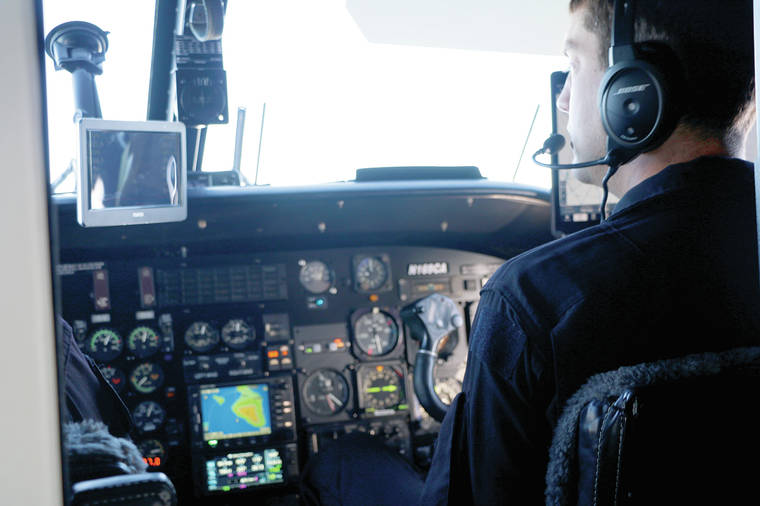HILO Following the latest mass-coral-bleaching event in Hawaiian waters last fall, the state Department of Land and Natural Resources Division of Aquatic Resources elected to use an equipment-rich, aerial platform to map and access the health of reefs along the more than 700 miles of shoreline in the Main Hawaiian Islands.
HILO — Following the latest mass-coral-bleaching event in Hawaiian waters last fall, the state Department of Land and Natural Resources Division of Aquatic Resources elected to use an equipment-rich, aerial platform to map and access the health of reefs along the more than 700 miles of shoreline in the Main Hawaiian Islands.
Operated by the Arizona State University Center for Global Discovery and Conservation Science, a twin-engine, turbo-prop aircraft is currently crisscrossing the state, creating an in-depth picture of reefs.
According to the program’s director, Dr. Greg Asner, “We’re looking for a net change in live coral cover on reefs. Our airborne observatory has unique capabilities that allows us to see through seawater to a depth of 70 feet. What we want to see is where there’s live coral on the sea floor, where there’s dead coral, where there’s algae, the depth of the water, and 3D imaging of fish habitat.”
The most serious impact, fueled by global climate change, are bleaching events caused by heat waves. Hawai‘i has experienced serious bleaching in three of the past five years.
Asner added, “Bleaching stresses reefs and NOAA (National Oceanic &Atmospheric Administration) predicts we’ll have these heat waves every year or two by 2030.”
The other major stressors on coral reefs are land-based pollution and sedimentation and overfishing. The outcome of the aerial surveys will help establish relationships and connections between science and management. The project also reflects Gov. David Ige’s 30X30 Marine Initiative, which intends to expand the network of marine managed areas to at least 30% of Hawai‘i’s reefs by 2030.

Subscribe today for unlimited access.
Already a subscriber?
Login
Not ready to subscribe?
Register for limited access.
If you have a print subscription but require digital access,
activate your account.





